
Wine Culture and Information since 2002 - Volume 22
 Wine Culture and Information since 2002 - Volume 22 |
|
Comparing Marsala Vergine and Vernaccia di OristanoTwo giants of Italian enology, wines of ancient and complex taste, wines frequently forgotten and undervalued, real and inimitable masterpieces |
|
Italy, like everyone knows, is a land of great wines, associated to the traditions of every territory, today expression of the highest level of quality in the world. Among its many wines, many are today unjustly forgotten, or, better to say, they do not catch the interest of consumers, who frequently prefer wines having a more immediate and less complex character. Wines once being very successful, today play a “secondary” role and, despite the efforts of producers, the charm of barrique prevails over the complex and endless character of these ancient wines, such as Marsala Vergine and Vernaccia di Oristano. Two great wines produced in the two main islands of Italy: Sicily and Sardinia. Wines who can stand, with no fear, to the passing of time like no other wine, while developing endless organoleptic qualities, certainly not immediate and direct like many other wines. Wines requiring the complete attention of nose, mouth and senses, wines which do not deserve superficiality or carelessness. Let your senses be ready, this month we are going to talk about two great wines: Marsala Vergine and Vernaccia di Oristano.
|
Marsala, in its many styles and amazing history, has been many times mentioned in the pages of DiWineTaste, therefore we will simply talk about its main qualities, in particular about vergine style. According to the ones who appreciate the great Sicilian fortified wine, Marsala Vergine represents the highest expression, in particular when it is produced with 100% Grillo grape. On this regard, we should remember - according to the production disciplinary - Marsala can be produced with Grillo, Catarratto and Inzolia grapes. Marsala is an ancient wine which is believed to be produced since remote times in the city where Garibaldi landed, since the times of ancient Romans. It should be said at those times, Marsala wine was very different from the one produced today. The modern style of Marsala is the result of the intuition of an English merchant - John Woodhouse - who decided, at the end of 1700s, to ship this wine to his homeland and, in order to save it from the stress of journey, he added grape brandy, therefore creating, as a matter of fact, a fortified wine, indeed, a masterpiece of fortified wine. Despite “vergine” style is the one to be appreciated the most by connoisseurs, it is the least produced style - in terms of quantity - a quantity which is as low as 3% of total production. If it is true in the production of many styles of Marsala are allowed many wine making techniques, including the adding of the so called mistella as well as cooked must, for “vergine” style it is not allowed the adding of anything, with the exception of grape brandy, indispensable for fortifying. We can therefore say “vergine” style is the Marsala in its purest and highest interpretation, in which are not allowed “corrections” of any type and therefore requiring the highest rigor and quality level. According to production disciplinary, Marsala Vergine must age in cask for at least 5 years, whereas it takes 10 years of aging for the “riserva” (reserve) style. It should be remembered Marsala was the first Italian wine to have reached the Denominazione d'Origine Controllata status (DOC, Denomination of Controlled Origin), on July 12th, 1963, even though the current production disciplinary has been revised and updated on 1986.
|
||||||||
|
Vernaccia di Oristano is undoubtedly one of the most forgotten wines of Italy. One of those magnificent wines to deserve a higher attention. This great wine is produced in Oristano, Sardinia, and it probably is one of the most ancient wines of the world; its production is dated back to Phoenician times. Vernaccia di Oristano is produced with the homonymous grape and made from techniques pretty similar to the great fortified Spanish wines, in particular, Jerez, or Sherry, however, as opposed to them, it is not a fortified wine. Despite this, the alcohol by volume of Vernaccia di Oristano is frequently higher than 15%. A wine of great complexity and astonishing longevity, Vernaccia di Oristano is today produced by very few producers who, with stubbornness and passion, continue to keep high the glory of this ancient wine of Sardinia. Vernaccia di Oristano takes the origin of its name, just like every other “vernaccia” grape, from Latin vernacula, that is something typical of a place, in this case, a grape, therefore present since remote times. It is in fact believed Vernaccia di Oristano was cultivated by Phoenicians, something which is proven by archaeological findings in the ancient city of Tharros, near the modern city of Cabras, in the province of Oristano. Others believe the name “vernaccia” comes from Latin vernum, that is “Springtime”. It was judge Eleonora d'Arborea who in the fourteenth century supported and encouraged the cultivation of Vernaccia di Oristano, by adopting the famous “Carta de Logu”, a group of laws which included - among the many - laws about the cultivation of vineyards and which was written by her father Mariano IV. One of the main characteristics of Vernaccia di Oristano is represented by the particular aging technique. Casks are intentionally left empty - for about 25% - in order to favor a strong oxidation of the wine while allowing yeast to go up to the surface, therefore forming a “layer”, commonly called flor. This “layer”, thanks to the metabolism of yeast of which it is made of, contributes to the development of organoleptic complexity of Vernaccia and - at the same time - protects the wine from an excessive oxidation, as well as contributing to a moderate oxidation. This process is similar to the one used for the production of the Spanish Jerez, wine with which Vernaccia shares many characteristics. With time, Vernaccia is racked in casks having progressive lower volumes, developing and refining its aromas and flavors. Vernaccia di Oristano was the first DOC wine of Sardinia, denomination recognized in 1972.
|
||||
|
Marsala Vergine and Vernaccia di Oristano are wines having very complex organoleptic qualities, a continuous discovery and surprise which can be appreciated from the glass. They are certainly not easy wines, they require attention and concentration and they worthily represent the category of meditation wines. The Marsala Vergine we will examine in our comparative tasting is Alagna's Marsala Vergine Baglio Baiata, produced with Grillo and Catarratto grapes, aged for at least five years in cask and then continues its evolution with the perpetuo system, the ancient and traditional production system of the magnificent Sicilian wine. As for the as much magnificent wine from Sardinia, we will examine Josto Puddu's Vernaccia di Oristano Riserva, of course produced with 100% Vernaccia di Oristano grape and aged with the traditional method of leaving the casks partially empty. Both wines will be tasted at the temperature of 14°C (57°F) and they will be poured in ISO tasting glasses. Thanks to strength of their aromas, a moderate temperature will attenuate the pungency of alcohol, while however allowing a full expression of aromas.
|
|
The quality which can be observed during the appearance analysis of Marsala Vergine and Vernaccia di Oristano are pretty similar. This is mainly because of the production techniques used for these excellent wines, in particular, the effects produced by oxidation. Both Marsala Vergine and Vernaccia di Oristano show pretty intense amber yellow colors, in which can also be appreciated brilliant nuances of golden yellow. As they are - in both cases - wines aged for a long time before being commercialized, periods which can also be more than ten years, in our glasses we will see wines with a pretty dark and intense colors. With time and with the aging in bottle, the color of these wines can also undergo a further development, therefore getting more intense and deep colors. We should however consider alcohol is a very good preservative, and in this wine it is found in pretty high quantity - an average of 15.5% in Vernaccia di Oristano, 19% in Marsala Vergine - therefore the evolution of color is pretty slow. The appearance analysis of our comparative tasting will start from Josto Puddu's Vernaccia di Oristano. By holding the glass tilted over a white surface - as usual, a sheet of paper or a tablecloth - we will observe the color of the wine at the base of the glass, at the point in which the liquid mass is thicker. We will notice a brilliant amber yellow color, while observing the wine towards the opening of the glass, where the thickness of wine is lower, we will appreciate amber yellow nuances. Let's now pass to the evaluation of the appearance of Alagna's Marsala Vergine Baglio Baiata. By holding the glass tilted over a white surface, we will observe a brilliant amber yellow color, not so different from Vernaccia di Oristano. Also the nuance of this Marsala Vergine, observed at the edge of the glass, is amber yellow. We can notice both wines have a pretty similar aspect and a high transparency, almost crystalline.
|
|
The evaluation of the aromas of Marsala Vergine and Vernaccia di Oristano represents a pretty difficult exercise for the taster. These wines are in fact characterized by a high quantity of complex sensations, something completely different and distant from any table wine. The result of this amazing complexity and richness is mainly derived from the special production technique where, in both cases, it is favored oxidation, of course controlled and certainly not left to chance. Together with the aromas developed during the aging in wood, result of a patience wait for years, these wines develop divine olfactory qualities. One of the most unusual aromas - impossible to find in other wines - it is the so called rancho. This aroma, hard to explain with words, develops in these wines as a consequence of the long and precious oxidation. In Oristano, for their Vernaccia, they usually call it, when it is particularly strong, “murruau”, characterized by a strong flavor of almond and aromas of high complexity, result of the effects caused by the precious layer of micro organisms and yeast called flor. Let's start the olfactory analysis from Josto Puddu's Vernaccia di Oristano Riserva. The first impact which can be perceived from the glass - of remarkable complexity - is the sequence of sensation derived from oxidation and the precious activity of micro organisms constituting the so called flor, with evident hints of almond. From the glass will be perceived, besides the typical and pleasing aroma of rancho - aromas of dried fig and honey, as well as date, hazelnut, vanilla, nail polish, leather, caramel and licorice: a profile of remarkable complexity and elegance. Let's now pass to the olfactory analysis of Alagna's Marsala Vergine Baglio Baiata. The opening of this glorious wine from Sicily allows the appreciation, besides the already mentioned rancho, of pleasing aromas of dried fig and almond. After having swirled the glass, the olfactory profile of this Marsala is completed by date, honey, citrus fruit peel, licorice, leather and vanilla. We will now compare the two wines, trying to identify in both the olfactory analogies produced by oxidation, quality contributing to enrich the aromatic complexity of wines.
|
|
Gustatory analysis of our two wines is as interesting as the olfactory analysis. In wines like these, alcohol plays an important role for the organoleptic perception, an element which contributes not only to balance the indispensable acidity, but it also gives and increases roundness and strength. Thanks to the long aging time in wood containers, these wines are characterized by a pleasing roundness, and together with acidity, they will make a perfect balance. In fact, it will be acidity to keep the crispness of these wines alive. Both Marsala Vergine and Vernaccia di Oristano are completely dry wines, however - in some cases - the high roundness and the alcohol itself, can deceive the taster who can think about the presence of an appreciable quantity of sugar. On this regard, it should be noticed, according to the respective disciplinary of production, in both cases the quantity of residual sugar must be lower than 4 grams per liter. As for alcohol, the minimum allowed quantity for Vernaccia di Oristano is 15%, whereas for Marsala Vergine is 18%, in this case obtained through fortification. Let's start the tasting from Josto Puddu's Vernaccia di Oristano. The attack of this wine is a pleasing balance between acidity and roundness, sensations perceived soon after the initial burning effect of alcohol, in this case of 15.5%. It should be noticed the good correspondence to the nose, in particular dried fig and almond, qualities frequently identifying - in the mouth - Vernaccia di Oristano. The finish of the wine is clearly persistent, leaving in the mouth pleasing flavors of dried fig and almond, very agreeable. Also the attack of Alagna's Marsala Vergine Baglio Baiata is characterized by a very good balance between acidity and roundness, sensations which can be clearly perceived after the initial effect of alcohol, in this wine being of 19%. Also the correspondence to the nose is very good, also in this case dried fig and almond. The finish is persistent, leaving in the mouth pleasing flavors of dried fig and almond, as well as hints of date. It should be compared the analogies of tastes in these wines, in which complexity is added to an impeccable elegance.
|
Wines of the Month |
|
|
|
Score legend Prices are to be considered as indicative. Prices may vary according to the country or the shop where wines are bought |
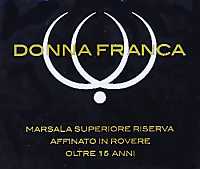
|
|
Marsala Superiore Riserva Semisecco Ambra Donna Franca |
|
| Florio (Sicily, Italy) | |
| Grapes: Grillo | |
| Price: € 25.00 - 50cl | Score: |
| Marsala Superiore Riserva Semisecco Ambra Donna Franca shows a deep amber yellow color and nuances of amber yellow, transparent. The nose reveals intense, clean, pleasing, refined and elegant aromas which start with hints of dried fig, dried apricot, almond and date followed by aromas of raisin, caramel, vanilla, citrus fruit peel, nail polish, rancho, honey, rhubarb, walnut husk and licorice. The mouth has excellent correspondence to the nose, a pleasing sweet and crisp attack, however balanced by alcohol, full body, intense flavors, pleasing roundness. The finish is very persistent with long flavors of dried fig, dried apricot, honey and almond. Marsala Superiore Riserva Semisecco Ambra Donna Franca ages for at least 15 months in casks followed by at least 6 months of aging in bottle. | |
| Food Match: Dried fruit tarts, Chocolate, Hard and piquant cheese | |
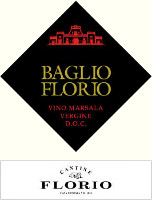
|
|
Marsala Vergine Baglio Florio 1997 |
|
| Florio (Sicily, Italy) | |
| Grapes: Grillo | |
| Price: € 21.50 - 50cl | Score: |
| Marsala Vergine Baglio Florio shows a brilliant amber yellow color and nuances of amber yellow, transparent. The nose reveals intense, clean, pleasing, refined and elegant aromas which start with hints of dried fig, rancho and almond followed by aromas of honey, leather, vanilla, walnut husk, quince jam, cedar, tobacco, citrus fruit peel and nail polish. The mouth has excellent correspondent to the nose, an alcoholic attack and pleasing roundness, however balanced, full body, intense flavors, pleasing roundness. The finish is very persistent with long flavors of dried fig, almond and honey. Marsala Vergine Baglio Florio ages for more than 10 years in cask followed by at least 12 months of aging in bottle. | |
| Food Match: Smoked fish, Roasted fish, Hard cheese | |
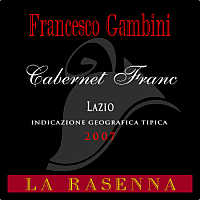
|
|
Cabernet Franc 2007 |
|
| La Rasenna (Latium, Italy) | |
| Grapes: Cabernet Franc | |
| Price: € 11.00 | Score: |
| This Cabernet Franc shows an intense ruby red color and nuances of ruby red, moderate transparency. The nose denotes intense, clean, pleasing and refined aromas which start with hints of black cherry, black currant and plum followed by aromas of blueberry, vanilla, violet, carob and bell pepper. The mouth has good correspondence to the nose, a slightly tannic attack and however balanced by alcohol, good body, intense flavors, pleasing roundness. The finish is persistent with flavors of black cherry, black currant and plum. This Cabernet Franc ages for 12 months in cask. | |
| Food Match: Roasted meat, Broiled meat and barbecue, Stewed meat | |
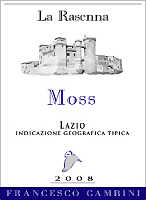
|
|
Moss 2008 |
|
| La Rasenna (Latium, Italy) | |
| Grapes: Moscato d'Alessandria (60%), Sauvignon Blanc (40%) | |
| Price: € 6.50 | Score: |
| Moss shows an intense golden yellow color and nuances of straw yellow, very transparent. The nose reveals intense, clean, pleasing and refined aromas which start with hints of grape, peach and pear followed by aromas of apple, lychee, nettle, sage and elder. The mouth has good correspondence to the nose, a crisp attack and however balanced by alcohol, good body, intense flavors, pleasing roundness. The finish is persistent with flavors of grape, peach and lychee. Moss ages for 4 months in steel tanks. | |
| Food Match: Fish appetizers, Pasta and risotto with crustaceans, Fried fish | |
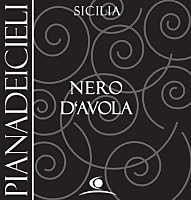
|
|
Nero d'Avola 2007 |
|
| Pianadeicieli (Sicily, Italy) | |
| Grapes: Nero d'Avola | |
| Price: € 8.00 | Score: |
| This Nero d'Avola shows a brilliant ruby red color and nuances of ruby red, moderate transparency. The nose reveals intense, clean, pleasing and refined aromas which start with hints of plum, blackberry and black cherry followed by aromas of blueberry, violet, vanilla, carob, tobacco and mace. The mouth has good correspondence to the nose, a tannic attack and however balanced by alcohol, good body, intense flavors, pleasing roundness. The finish is persistent with flavors of plum, blackberry and black cherry. This Nero d'Avola ages for 8 months in barrique followed by 2 months of aging in bottle. | |
| Food Match: Broiled meat with barbecue, Roasted meat, Stewed meat | |
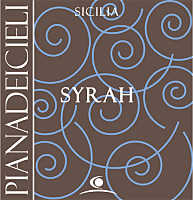
|
|
Syrah 2007 |
|
| Pianadeicieli (Sicily, Italy) | |
| Grapes: Syrah | |
| Price: € 8.00 | Score: |
| This Syrah shows an intense ruby red color and nuances of ruby red, little transparency. The nose denotes intense, clean, pleasing and refined aromas that start with hints of black cherry, black currant and plum followed by aromas of blueberry, violet, black pepper, vanilla, cocoa and menthol. The mouth has good correspondence to the nose, a tannic attack and however balanced by alcohol, good body, intense flavors, pleasing roundness. The finish is persistent with flavors of black cherry, black currant and plum. This Syrah ages in part in barrique. | |
| Food Match: Broiled meat and barbecue, Roasted meat, Braised and stewed meat, Hard cheese | |
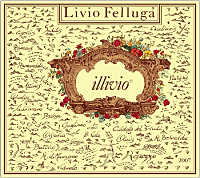
|
|
Colli Orientali del Friuli Bianco Illivio 2007 |
|
| Livio Felluga (Friuli Venezia Giulia, Italy) | |
| Grapes: Pinot Bianco, Chardonnay, Picolit | |
| Price: € 21.00 | Score: |
| Colli Orientali del Friuli Bianco Illivio shows a brilliant straw yellow color and nuances of straw yellow, very transparent. The nose denotes intense, clean, pleasing and refined aromas which start with hints of apple, banana and plum followed by aromas of hawthorn, pear, hazelnut, grapefruit, honey, vanilla and mineral. The mouth has good correspondence to the nose, a crisp attack and however balanced by alcohol, good body, intense flavors, pleasing roundness. The finish is persistent with flavors of apple, plum and banana. Colli Orientali del Friuli Bianco Illivio ages for 10 months in barrique followed by 9 months of aging in bottle. | |
| Food Match: Roasted fish, Roasted white meat, Stewed fish | |
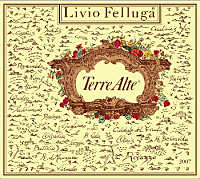
|
|
Colli Orientali del Friuli Rosazzo Bianco Terre Alte 2007 |
|
| Livio Felluga (Friuli Venezia Giulia, Italy) | |
| Grapes: Friulano, Pinot Bianco, Sauvignon Blanc | |
| Price: € 40.00 | Score: |
| Colli Orientali del Friuli Rosazzo Bianco Terre Alte shows a brilliant straw yellow color and nuances of greenish yellow, very transparent. The nose reveals intense, clean, pleasing, refined and elegant aromas which start with hints of peach, pear and pineapple followed by aromas of medlar, almond, broom, nettle, hawthorn, apple, grapefruit, elder flower, plum and vanilla. The mouth has good correspondence to the nose, a crisp attack and however balanced by alcohol, good body, intense flavors, pleasing roundness. The finish is persistent with long flavors of peach, pear and pineapple. The grapes Pinot Blanc and Sauvignon Blanc age for 10 months in steel tanks, whereas the Friulano grape ages for 10 months in barrique. | |
| Food Match: Roasted fish, Stuffed pasta, Stewed fish, Fish and mushroom soups, Roasted white meat | |
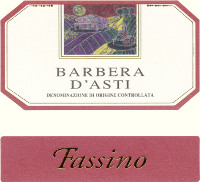
|
|
Barbera d'Asti 2007 |
|
| Fassino Giuseppe (Piedmont, Italy) | |
| Grapes: Barbera | |
| Price: € 6.00 | Score: |
| This Barbera d'Asti shows a brilliant ruby red color and nuances of ruby red, moderate transparency. The nose denotes intense, clean and pleasing aromas which start with hints of cherry, plum and blueberry followed by aromas of violet, blackberry, raspberry and cyclamen. The mouth has good correspondence to the nose, a slightly tannic attack and however balanced by alcohol, good body, intense flavors, pleasing crispness. The finish is persistent with flavors of cherry, blueberry and plum. | |
| Food Match: Pasta with meat and mushrooms, Sauteed meat, Stewed meat | |
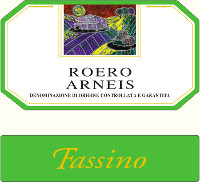
|
|
Roero Arneis 2008 |
|
| Fassino Giuseppe (Piedmont, Italy) | |
| Grapes: Arneis | |
| Price: € 6.00 | Score: |
| This Roero Arneis shows an intense greenish yellow color and nuances of greenish yellow, very transparent. The nose denotes intense, clean, pleasing and refined aromas which start with hints of apple, pear and broom followed by aromas of pineapple, peach, citrus fruits and hazelnut. The mouth has good correspondence to the nose, a crisp attack and however balanced by alcohol, good body, intense flavors, agreeable. The finish is persistent with flavors of apple, pear and peach. | |
| Food Match: Fish and crustacean appetizers, Pasta and risotto with crustaceans, Vegetable soups | |

|
|
Gradiva Collectio 2006 |
|
| Casa di Grazia (Sicily, Italy) | |
| Grapes: Nero d'Avola | |
| Price: € 16.00 | Score: |
| Gradiva Collectio shows an intense ruby red color and nuances of ruby red, moderate transparency. The nose reveals intense, clean, pleasing and refined aromas that start with hints of black cherry, plum and blackberry followed by aromas of blueberry, violet, raspberry and carob. The mouth has good correspondence to the nose, a tannic attack and however balanced by alcohol, good body, intense flavors, agreeable. The finish is persistent with flavors of black cherry, plum and blackberry. Gradiva Collectio ages for 12 months in steel tanks followed by 6 months of aging in bottle. | |
| Food Match: Stuffed pasta, Stewed meat with mushrooms, Broiled meat and barbecue | |
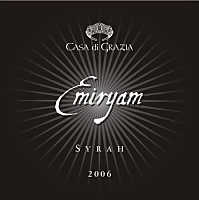
|
|
Emyriam 2006 |
|
| Casa di Grazia (Sicily, Italy) | |
| Grapes: Syrah | |
| Price: € 18.00 | Score: |
| Emyriam shows an intense ruby red color and nuances of ruby red, little transparency. The nose denotes intense, clean, pleasing and refined aromas which start with hints of plum, black currant and black cherry followed by aromas of blueberry, violet, vanilla, tobacco, chocolate, anise, mace and eucalyptus. The mouth has good correspondence to the nose, a tannic attack and however balanced by alcohol, good body, intense flavors, pleasing roundness. The finish is persistent with flavors of plum, black currant and black cherry. Emyriam ages for 8 months in barrique followed by 5 months of aging in bottle. | |
| Food Match: Roasted meat, Stewed and braised meat, Hard cheese | |
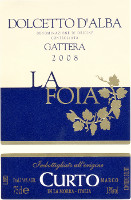
|
|
Dolcetto d'Alba Gattera La Foia 2008 |
|
| Curto Marco (Piedmont, Italy) | |
| Grapes: Dolcetto | |
| Price: € 8.00 | Score: |
| Dolcetto d'Alba Gattera La Foia shows an intense ruby red color and nuances of purple red, moderate transparency. The nose reveals intense, clean and pleasing aromas which start with hints of cherry, blackberry and raspberry followed by aromas of plum, blueberry and violet. The mouth has good correspondence to the nose, a tannic attack and however balanced by alcohol, good body, intense flavors, pleasing crispness. The finish is persistent with flavors of cherry, blackberry and raspberry. Dolcetto d'Alba Gattera La Foia ages in steel tanks. | |
| Food Match: Pasta with meat and mushrooms, Sauteed meat, Roasted white meat | |
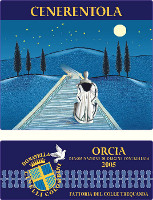
|
|
Orcia Rosso Cenerentola 2005 |
|
| Donatella Cinelli Colombini (Tuscany, Italy) | |
| Grapes: Sangiovese (65%), Foglia Tonda (35%) | |
| Price: € 20.00 | Score: |
| Orcia Rosso Cenerentola shows a brilliant ruby red color and nuances of ruby red, little transparency. The nose reveals intense, clean, pleasing and refined aromas which start with hints of black cherry, plum and violet followed by aromas of blueberry, blackberry, vanilla, cinnamon, tobacco, chocolate and menthol. The mouth has good correspondence to the nose, a tannic attack and however balanced by alcohol, good body, intense flavors, agreeable. The finish is persistent with flavors of black cherry, plum and blackberry. Orcia Rosso Cenerentola ages for 12 months in cask and barrique. | |
| Food Match: Roasted meat, Stewed and braised meat with mushrooms, Hard cheese | |
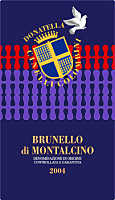
|
|
Brunello di Montalcino 2004 |
|
| Donatella Cinelli Colombini (Tuscany, Italy) | |
| Grapes: Sangiovese | |
| Price: € 28.00 | Score: |
| This Brunello di Montalcino shows a brilliant ruby red color and nuances of ruby red, moderate transparency. The nose reveals intense, clean, pleasing and refined aromas which start with hints of black cherry, plum and violet followed by aromas of blackberry, blueberry, vanilla, pink pepper, chocolate and mace. The mouth has good correspondence to the nose, a tannic attack and however balanced by alcohol, full body, intense flavors. The finish is persistent with flavors of plum, black cherry and blueberry. This Brunello di Montalcino ages for 12 months in barrique and completes its aging in cask. | |
| Food Match: Game, Roasted meat, Braised meat, Hard cheese | |
|
||||||||
|
DiWineTaste Polls
|
| |||||||
Privacy Policy | |||||||


| Copyright © 2002-2024 Antonello Biancalana, DiWineTaste - All rights reserved |
| All rights reserved under international copyright conventions. No part of this publication and of this WEB site may be
reproduced or utilized in any form or by any means, electronic or mechanical, without permission in writing from DiWineTaste. |